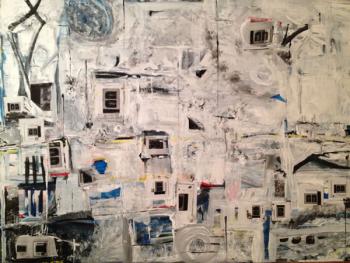Serendip is an independent site partnering with faculty at multiple colleges and universities around the world. Happy exploring!

Youth Art and Self-Empowerment Project (YASP): Campus-Wide Event
Campus-wide event (Dorothy Vernon Room)

"why try to define or label the work?"
“My Struggle” has set off a debate about which genre it properly belongs to. The original Norwegian version put the word “novel” on the title page, implying a certain distancing from the real events the book portrays, but that designation has been removed from the American edition, a decision that Mr. Knausgaard attributed to his American publisher, Archipelago Books.
“It was a conscious choice not to label the book for the reader,” Jill Schoolman, the founder of Archipelago, wrote in an e-mail. “I feel that ‘the project’ dwells comfortably between (and embraces both) fiction and memoir. (Aren’t they always inextricably entwined?) Why try to define or label the work?”
--from He Says a Lot, For a Norweigan. Books. The New York Times (June 18, 2012)
Break-out Group Discussion
Yellow Group:
Recruitment:
- Create a package (of information)
- Clarify what is common in network
- 'Market' at career fairs, try to collectively compete with TFA
- Encourage faculty to present teaching as option, plant idea early
- Video? market teaching when students choose major
- Hire undergrads as teaching assistants
- Make connections with science + math faculty
Sharing best practices for preparation+ induction:
- Where do we get resources?
- Website (?) for sharing ideas
- i.e. invite recent grads back to talk to undergrads
- look at CIRTL (Center for Integr. of Research Teaching and Learning)
- get list of grad websites resources
- how to choose/ support master/ clinical teachers
Preparing/ opportunities for teacher leadership:
- Invite new teachers to get together to share
- Building capacity for master teachers
Share resources:
- Summer program for contact specific pedagogy
Blue Group:
Challenges:


 Schooling often rests uneasily on presumed dichotomies between coverage and inquiry, skill development and creativity. By drawing on the often under-recognized parallels between biological evolution and human learning, this essay argues that formal education need and ought not forego the unconscious exploratory processes of informal learning. Rather than posit as natural the cultural story that formal schooling must prepare students to integrate with given cultures and foreknowable futures, the evolutionary perspective shows that education is better thought of as preparing students to create cultures and to change, and foster change, in relation to unknown futures. The properties that distinguish formal from informal learning -- conscious reflection and a degree of collective consensus about what constitutes knowledge at any given time – are, we argue, useful not as ends in themselves, but as tools for maximizing, sharing, and extending unconscious, evolutionary learning. Working with them as such offers a way out of some of education’s persistent problems. Two autobiographical case studies provide grounded examples of these evolutionary changes and indicate pathways of inquiry by which to pursue them.
Schooling often rests uneasily on presumed dichotomies between coverage and inquiry, skill development and creativity. By drawing on the often under-recognized parallels between biological evolution and human learning, this essay argues that formal education need and ought not forego the unconscious exploratory processes of informal learning. Rather than posit as natural the cultural story that formal schooling must prepare students to integrate with given cultures and foreknowable futures, the evolutionary perspective shows that education is better thought of as preparing students to create cultures and to change, and foster change, in relation to unknown futures. The properties that distinguish formal from informal learning -- conscious reflection and a degree of collective consensus about what constitutes knowledge at any given time – are, we argue, useful not as ends in themselves, but as tools for maximizing, sharing, and extending unconscious, evolutionary learning. Working with them as such offers a way out of some of education’s persistent problems. Two autobiographical case studies provide grounded examples of these evolutionary changes and indicate pathways of inquiry by which to pursue them.
